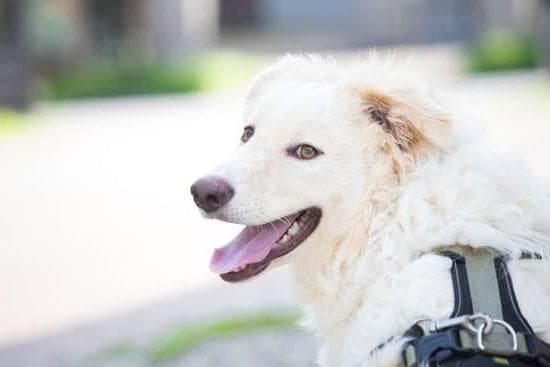Separation anxiety can be a common issue for dogs, but fortunately it can be successfully trained and managed. The following tips can help you to train your dog to cope with being left alone:
1. Start with gradual separations. Begin by leaving your dog alone for very short periods of time, and gradually increase the length of time you are away. This will help your dog to become comfortable with being alone.
2. Create a routine. Whenever you leave your dog, make sure you always leave at the same time and do the same things. This will help your dog to know what to expect and will help to reduce anxiety.
3. Provide plenty of exercise and stimulation. A tired dog is less likely to experience anxiety when left alone. Make sure your dog gets plenty of exercise and playtime each day.
4. Provide a safe and comfortable place for your dog to retreat to. If your dog has a special place to go when he or she is feeling anxious, this can help to reduce the anxiety.
5. Reward your dog for good behavior. When your dog behaves calmly when left alone, reward him or her with a treat or special toy. This will help to reinforce the desired behavior.
6. Seek professional help if needed. If your dog’s separation anxiety is severe or persistent, it may be necessary to seek professional help. A qualified behaviorist can help to create a training program specifically for your dog.
Dog Anxiety Training Chandler
AZ
Anxiety in dogs can be a very serious problem. Left untreated, it can lead to all sorts of other issues, such as aggression, destruction, and even self-harm. Fortunately, though, there are a number of different anxiety training techniques that can help to address the problem.
One of the most important things to keep in mind when training a dog with anxiety is that you need to be very patient. It can take a lot of time and effort to help a dog overcome his or her anxiety, and there is no guarantee that it will be successful. However, with patience and perseverance, it is often possible to help a dog overcome his or her anxiety and lead a normal, happy life.
One of the most common anxiety training techniques is called systematic desensitization. This technique involves gradually exposing the dog to the things that scare him or her. Initially, you will start with very low doses of the stimulus, and then gradually increase the intensity over time. This technique can be a little bit risky, as it is possible for the dog to become overexcited or even aggressive, but it can be very effective in the right hands.
Another common technique is called counterconditioning. This technique is similar to systematic desensitization, but it involves teaching the dog to associate the feared stimulus with something positive. For example, you might give the dog a treat every time he or she sees a cat. Over time, the dog will start to associate cats with something positive, and the fear will start to disappear.
Both of these techniques can be very effective in helping a dog overcome his or her anxiety. However, it is important to remember that each dog is different, and what works for one dog may not work for another. If you are having trouble dealing with your dog’s anxiety, it is always best to consult a professional trainer or behaviorist.
Dog Car Anxiety Training
Dogs that suffer from car anxiety can be a handful. Not only do they often act out and become agitated, but they can also be a danger to both themselves and the other passengers in the car. Fortunately, there are a number of car anxiety training techniques that can help to calm and relax your dog while you’re on the road.
One of the simplest car anxiety training techniques is to associate the car with something positive. Whenever you take your dog for a ride, make sure to bring along some of their favorite toys or treats. This will help your dog to associate the car with good things, and will make them more likely to relax and enjoy the ride.
Another great car anxiety training technique is to use a Thundershirt. This is a special shirt that wraps around your dog’s body and applies gentle pressure, which can help to calm and relax them.
If your dog is particularly anxious in the car, you may also want to consider enrolling them in a canine obedience class. This can help to build their confidence and make them more comfortable in unfamiliar situations.
Ultimately, the best way to help your dog overcome car anxiety is to be patient and consistent. Start by using the techniques listed above, and continue to work with your dog until they are comfortable and relaxed in the car. With a little time and patience, your dog can learn to love car rides just as much as you do!
Service Dog Training For Anxiety
Disorders
Anxiety disorders are one of the most common mental health conditions in the United States. They can range from mild to severe, and can impact people’s ability to function in everyday life. Anxiety disorders can be treated with medication and therapy, but for some people, a service dog may also be a helpful treatment option.
Service dogs are specifically trained to help people with disabilities, including anxiety disorders. They can provide emotional support, help reduce anxiety symptoms, and help people stay safe in difficult situations.
If you’re considering getting a service dog to help with your anxiety disorder, it’s important to do your research first. Not all service dogs are created equal, and not all dogs are suitable for people with anxiety disorders. It’s important to find a reputable service dog training organization that will match you with a dog that is suited to your needs.
Once you’ve got your service dog, it’s important to work with your dog trainer to create a training program that will help you manage your anxiety. Service dogs need to be obedience trained and task trained. They also need to be socialized with other people and animals.
A service dog can be a life-changing addition for people with anxiety disorders. If you’re considering getting a service dog, talk to your doctor or therapist about whether it’s the right option for you.
How To Train Dogs With Separation Anxiety
Separation anxiety is a common issue among dogs, and can be difficult to treat. Fortunately, there are a number of methods that can help train your dog to overcome this issue.
The first step is to identify the triggers that cause your dog to become anxious when left alone. Common triggers include the sound of someone leaving, being in a new environment, or being alone for a long period of time.
Once you have identified the triggers, you can begin to work on a training plan. One common technique is to create a cue or signal that your dog can use to let you know when they are feeling anxious. This can be anything from a specific word or phrase to a certain action or behavior.
Once your dog is responding to the cue, you can start to slowly increase the amount of time they are left alone. This should be done gradually, and only after your dog has shown signs of improvement.
If your dog is still struggling with separation anxiety, you may need to seek professional help. A qualified behaviorist can help create a personalized training plan that will help your dog overcome this issue.

Welcome to the blog! I am a professional dog trainer and have been working with dogs for many years. In this blog, I will be discussing various topics related to dog training, including tips, tricks, and advice. I hope you find this information helpful and informative. Thanks for reading!





